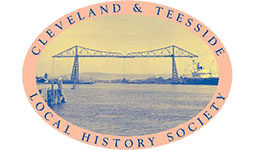The Event:
Teesside acquired its own university in 1992 when the Teesside Polytechnic was designated as a university.
The story of higher education in Teesside can, however, be traced back to Victorian times.
The rapidly expanding industries that emerged in the Teesside area from the 1850s onwards needed a workforce with specialist skills and training. Initially this was provided through schools and institutes that provided courses for workers. However, by the early twentieth century there was a recognised need for a specialist institution offering courses to develop the skills needed to support the engineering, bridge and shipbuilding industries.
The first such institution was Constantine College, named after local ship owner Joseph Constantine who provided £80,000 to help build a college. Construction of the college began in 1927, teaching began on September 16 1929, and Constantine College was officially opened on July 2 1930 by the Prince of Wales, the future King Edward VIII.
Constantine was both a further and higher education college – with students as young as 15 at one end of the spectrum and degree courses validated by the University of London at the other. The focus in the early days was on courses in metallurgy, engineering and chemistry. Student numbers increased rapidly beyond the original 700 anticipated – they grew to 2,211 by the outbreak of WW2 in 1939.
During World War 2 the college accommodated students selected by the Ministry of Education for training as potential engineering officers for HM forces in anticipation of the war continuing. At that time the college had a tough physical training regime – starting with PE in the gym every morning.
Most students at the college in the 1950s studied part-time. Classes were mostly held on an evening then with all the big engineering companies such as Head Wrightson, Dorman, Smith’s Dock and the Furness shipyard sending their employees to study there. Course subjects expanded to include window dressing for employees of Binns and other large stores.
Students numbers by the late 1950s had increased to the thousands and accommodation was proving inadequate, comprising the main building on Borough Road, part of the Hugh Bell school and row of tin roofed huts, so from 1962 the huts were pulled down and work began on new buildings.
After a decade of growth and expansion, of students, of courses, and of buildings, Constantine College became Teesside Polytechnic in 1969.
By 1970 the student population had grown to 3,000 and with plans to expand further a major redevelopment programme began. The Middlesbrough Tower and a 100-unit hall of residence was completed. The Clarendon Building followed in 1973, the Stephenson Building in 1976 and in 1978, Teesside Polytechnic merged with Teesside College of Education and Flatts Lane was acquired, the same year that a new library was added.
A state of the art chemical engineering building opened in 1981, the Mathematics and Computer Science Building – now the Grieg Building – opened in 1983, and plans were developed for a student village, stretching from Borough Road to Albert Park.
In 1989, Teesside Poly left local authority control and became a self-governing independent institution of higher education.
By 1992 the institution had 8,000 enrolled students.
That year the institution which had begun with Constantine College and had become Teesside Polytechnic was designated the University of Teesside.
In 2009 the University underwent a major rebrand as Teesside University and scooped the hugely prestigious University of the Year accolade from the Times Higher Education magazine.
The Significance:
The arrival of the University of Teesside in 1992 gave official recognition to a process which had begun many decades earlier – the provision of higher education on Teesside.
The arrival of the University of Teesside in 1992 was not the first opportunity on Teesside for local people, and those from elsewhere, to study for degrees and other higher-level qualifications. Nor was it the starting point for important research: there are many examples of significant and influential research that had been carried out prior to 1992.
But the designation of the University of Teesside, later renamed Teesside University, was a significant point in the development of Cleveland and Teesside.
Suggested Places to Visit:
Teesside University
